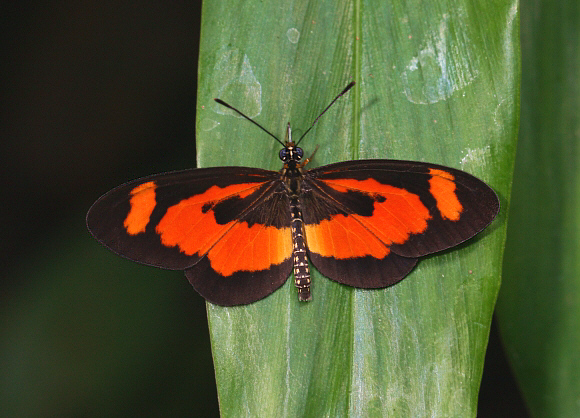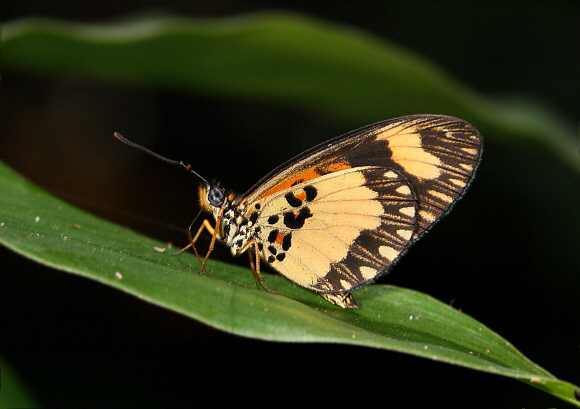
Introduction
There are 228 Acraea species, of which 223 are Afrotropical in distribution. The majority are found in the forests and savannahs of East Africa, while about 60 are found in West Africa. Beyond Africa a further 5 species occur in the Oriental region, and another is found in Australia / New Guinea. In the neotropical region there are 50 additional species, but these are normally placed in the genera Actinote, Altinote and Abananote due to differences in venation and genitalia.
All Acraea species have elongate forewings and rounded hindwings. The wings are thinly scaled and in many species are semi-transparent. The scales wear off very easily so that insects more than 4 or 5 days old have a glassy or greasy appearance. The majority of species have a predominantly brownish or greyish ground colour, marked with bands or patches of red or orange. The basal area of the underside hindwings of most species is marked with a pattern of small black spots.
Acraea bonasia is distributed from Senegal to southern Sudan, and south to Uganda and western Kenya and northern Tanzania.
Habitats
This species is found in primary and secondary forest habitats, at altitudes between sea level and about 1300m.
Lifecycle
The larval foodplants include Clappertonia, Triumfetta ( Tiliaceae ) and Hibiscus ( Malvaceae ).

Adult behaviour
This small delightful Acraea has a slow, feeble flight, but is quite tenacious, being capable of clinging tightly to leaves in the stiffest of breezes. It is usually seen in low numbers, but in the dry season migratory swarms of several hundreds sometimes descend to drink at damp ground at the edges of puddles or streams. Males also commonly visit carnivore dung.
